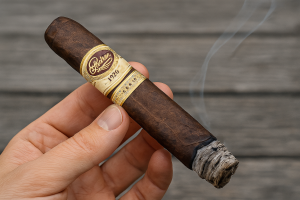How Can You Determine the Strength of a Cigar: A Comprehensive Guide for Smokers

Understanding the strength of a cigar is essential for enthusiasts seeking to enhance their smoking experience.
Cigar strength generally refers to the intensity of flavor and nicotine content, with various factors contributing to this measurement.
Below, we explore how to accurately gauge a cigar's strength, backed by factual insights and real-world examples.
Tobacco Blend Composition - Key Factor in Determining the Cigar Strength
Cigars can contain a diverse array of tobacco types, including ligero, seco, and volado, each contributing uniquely to the overall strength, flavor, and smoking experience, making the selection of these components crucial for achieving the desired characteristics in the final product.
- Ligero: This is the strongest tobacco, found in the upper part of the plant. It has a heavier flavor and higher nicotine content.
- Seco: Mildly potent, seco tobacco is commonly used in the midsection of the cigar. It offers a balanced flavor profile.
- Volado: Typically the mildest, volado tobacco is used for burning characteristics, having lower nicotine.
Example: A cigar that features a higher percentage of ligero will typically be stronger than a cigar primarily made of seco and volado tobacco.

Cigar Size and Ring Gauge
The size and shape of a cigar influence its strength. Larger cigars contain more tobacco, leading to a more intense smoking experience.
Ring gauge (the diameter of the cigar) also plays a crucial role:
- Larger Ring Gauge: More tobacco and a potential increase in strength.
- Shorter Cigars: Often concentrate the flavor and strength in a smaller profile, like a robusto.
It’s also worth keeping in mind that, according to the Cigar Association of America, larger ring gauge cigars have gained popularity, filling the gap for smokers seeking richer flavors due to their increased tobacco content.
Tasting Profile
Flavors within the cigar can affect the perceived strength. A robust, peppery flavor often indicates a stronger cigar, whereas sweet or creamy notes may suggest a milder experience.
Common Flavor Indicators:
- Full-Bodied: Earthy, strong, or spicy flavors often correlate with higher strength.
- Medium-Bodied: Balanced flavors; a combination of mild and robust.
- Mild: Sweet, light, and creamy flavors often indicate a low strength.
Example: A Padron 1964 Anniversario may be labeled as full-bodied due to its rich, complex flavors combined with high nicotine levels.
Manufacturer Recommendations
When uncertain, refer to the manufacturer's description. Many premium cigar makers provide guidelines regarding the strength of their products.
Bonus Tip: Look for companies like Oliva or Rocky Patel, which often categorize their cigars as mild, medium, or full-bodied to aid consumers in selecting the right strength.
Personal Preference and Experience
Ultimately, individual taste preferences and prior smoking experiences significantly influence how one perceives the strength of a cigar, as different smokers may have varying sensitivities to flavor profiles that can alter their overall enjoyment and assessment of a cigar's potency.
It’s essential to pay attention to your own reactions:
- New Smokers: Might prefer milder cigars to acclimatize.
- Experienced Smokers: May seek full-bodied cigars with complex profiles.
Find the Perfect Cigar for Your Taste
By understanding the factors that determine the strength of a cigar, you can elevate your smoking experience and enjoy your time more thoroughly.
Now that you have an idea of what suits your palate the most, make sure to browse through our online cigar shop and find that perfect cigar piece you’ve been searching for.
Key Takeaways from the Article:
- Experiment and Explore: Don't hesitate to try a variety of tobacco blends and strengths to find what suits your palate.
- Ask for Guidance: Visit local cigar shops and engage with knowledgeable staff for recommendations based on your taste preferences.
- Keep a Cigar Journal: Document your experiences with various cigars, noting the strength and flavors you encounter, assisting in future selections.















